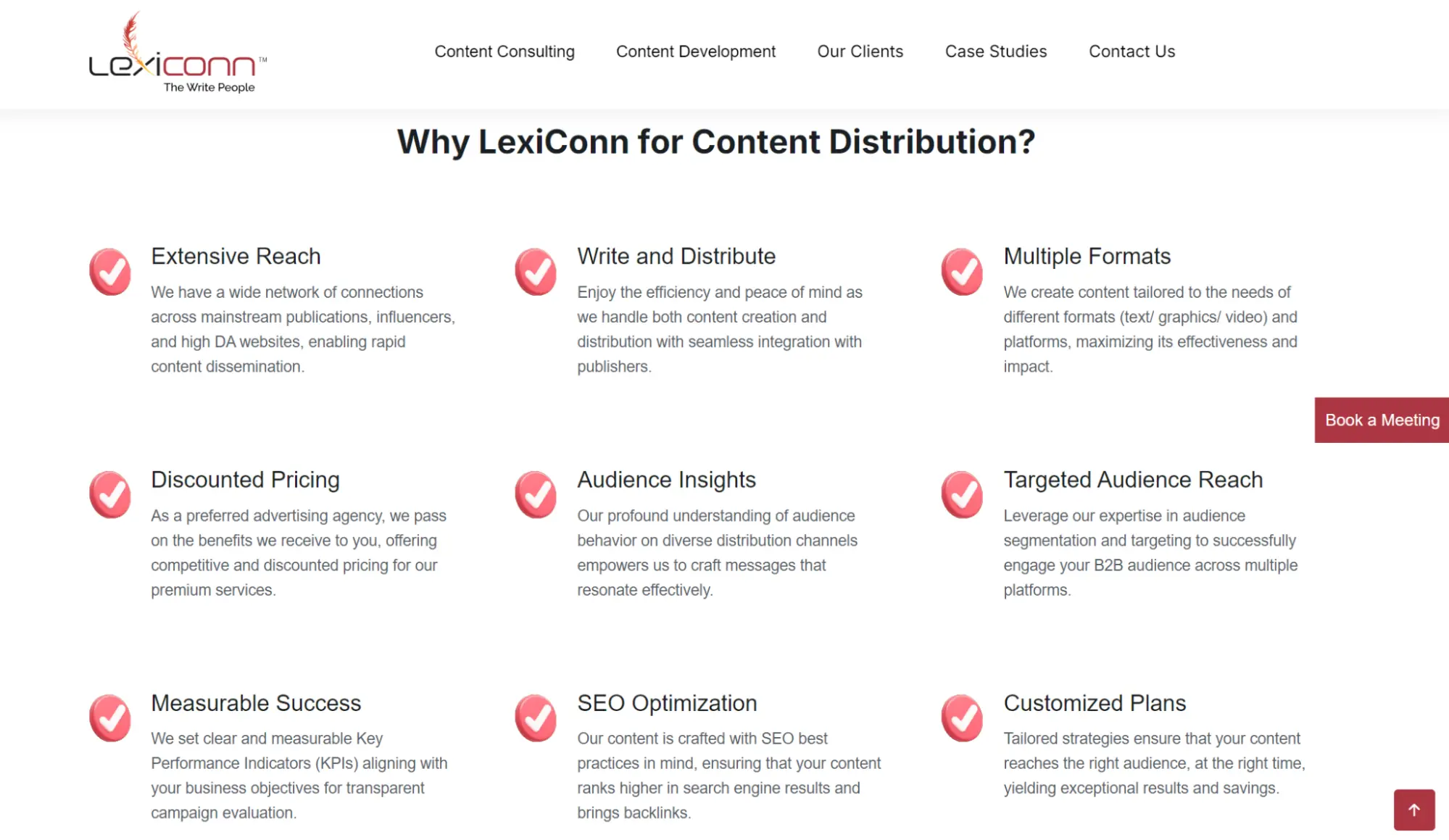
Writing for the web is a craft that involves more than just writing words and paragraphs on a page. It requires understanding how people read content online, how search engines work, and how to structure your writing so that it engages and informs. When visitors land on your website, the words they see can make or break their experience. If you’re trying to sell a product, promote a service, or build a brand, compelling website copy is essential. In this guide, we’ll walk you through the essential elements of writing for the web and how to create optimized website content that performs.

Before you start typing, it’s important to think about the layout of the page you’re writing for. It’s tempting to dive into the content like it’s a long-form article, but web pages demand a different approach.
Your readers don’t read web pages the way they do books or articles. They scan. With that in mind, it’s important to structure your content with this behavior in mind. Using clear headings, subheadings, and bullet points can greatly enhance your content. These elements help guide the reader through the content and allow them to quickly find the information they need.
For example, if you’re writing a page with a big headline and a subheading that introduces a topic in a couple of sentences, you should keep that in mind as you draft. A well-structured page might have:
|
Tip: Be conscious of writing too much. The information you want to convey might look concise in a draft, but once formatted on a webpage, it may appear much longer than anticipated. Aim for brevity and clarity. |
Once your page layout is in place, you can seamlessly introduce your brand’s story. This narrative is important for connecting with your audience on a deeper level. Your brand story should articulate your mission, values, and the journey that brought you to where you are today. This narrative should evoke emotions that align with their aspirations and values. To create an effective brand story, consider the following techniques:
Identify Your Core Message: What does your brand stand for? What problem do you solve? Your core message should be at the heart of your story.
Highlight Your Unique Journey: Share the story of how your brand came to be. This could include challenges you faced, pivotal moments, and milestones that shaped your business. Authenticity is key—people appreciate vulnerability with honesty.
Make It Relatable: Your story should reflect your audience’s experiences and aspirations. Use language and examples that connect with them, and don’t hesitate to showcase how your brand aligns with their values.
Incorporate Characters: Whether it’s the founder, employees, or customers, introducing relatable characters can help humanize your brand. Encourage them to share their experiences and viewpoints to craft a narrative that resonates with your audience.
Every page on your site should have a few fundamental elements, and one of the most important is the H1 heading. The H1 is the main title of the page and is usually the first thing visitors see. It’s also a crucial factor for search engines to understand what your page is about.
Your H1 should directly describe what’s on the page or what service or product is being offered. Many businesses get this wrong by writing vague or overly broad headings. Let’s look at an example.
If you manage a digital marketing agency, your homepage could showcase the range of services you provide, including SEO, social media management, and content creation. However, you might also have a specific page dedicated to your SEO services.
It would be a mistake to use “SEO” as the H1 heading. While this seems straightforward, it’s too vague. A better heading would be something like “Expert SEO Services for E-commerce Businesses” or “Results-Driven SEO Solutions for Growing Brands.” This makes it clear who the service is for and what the page is about, providing visitors with more context and drawing in the right audience.

The same rule applies to industries like healthcare. For example, if you run a clinic offering physiotherapy, using a heading like “Physiotherapy” is too broad. Instead, a more targeted heading like “Physiotherapy Services for Sports Injuries” is clearer and helps both visitors and search engines understand the page’s purpose.
|
Key takeaway: Your headings, particularly your H1, should not assume that visitors have already visited your homepage or know anything about your business. Make your headings clear, descriptive, and self-contained. |
Once you’ve nailed your H1, it’s time to move on to H2 headings. Subheadings help break up your content, making it more scannable and digestible. When a visitor lands on your page, they should be able to understand its structure at a glance just by looking at the subheadings.
For instance, if you’re designing a services page for your business-driven content writing, your H2 could be:
These subheadings guide readers through the content, allowing them to quickly locate what they need. Users interested in content strategies or content distributions can find the relevant sections without sifting through lengthy paragraphs.
When creating subheadings, think about the questions or concerns your readers might have. What are the main points you want to get across? Write your subheadings to reflect those points. For example:
This way, your content is easy to navigate, and your readers can find the answers they need without much effort.

Once you’ve structured your page with headings and subheadings, it’s time to fill in the gaps with your body copy. This is where you dive deeper into the subject and provide more detailed information.
A helpful tip for writing body copy is to imagine the conversation between your best salesperson and their best customer. Think about the kinds of questions the customer would ask and how the salesperson would respond. The conversation would likely be informative, benefits-driven, and straightforward. Your body copy should follow that same tone.
Depending on the type of page you’re writing, the copy might vary slightly. For example:
|
Tip: If you’re struggling to come up with enough content, try writing out a list of potential customer questions and then answering them. This will help you cover all the bases and create a well-rounded piece of content. |
Using high-quality, relevant images that complement your text.
Incorporating short, informative videos for better audience engagement.
Relevance: Ensure that images and videos directly relate to the content. They should enhance the story, not distract from it.
Image Formats: Use formats like JPEG for photographs and PNG for graphics with transparency. WebP is another excellent option that offers high quality at smaller file sizes.
Quality: Aim for 72 DPI (dots per inch) for web images, which provides sufficient quality without unnecessary data. For larger images, keep the resolution at 150 DPI, ensuring clarity without excessive size.
Alt Text: Don’t forget to add descriptive alt text to your images for accessibility and SEO purposes. This not only helps visually impaired users but also improves your site's searchability.
Your writing should always have a purpose, and more often than not, that purpose is to get the reader to take some kind of action. This is where a Call to Action (CTA) comes in. If your goal is to have the reader sign up for a newsletter, book a consultation, or make a purchase, the CTA needs to be clear and compelling.
Here are a few tips for writing effective CTAs:
Editing is not just about fixing typos; it’s about improving clarity, tone, and the overall impact of your writing. Each revision brings your content one step closer to being polished and ready for your audience. Once your content is complete, taking the time to refine it ensures it communicates your message effectively. Here are key areas to focus on:
Ensure your content is clear and straightforward. If you find yourself using long sentences, consider breaking them up to improve readability. To improve, ask yourself:
Concise writing is more impactful. Look for any extra words, phrases, or sentences that don't add value to the content.
Use tools or ask someone to read your content and identify where it can be trimmed.
Tone reflects your brand's personality. While reviewing, ensure the tone is appropriate for your audience and purpose.
Revisit your target audience’s preferences and adjust your tone to fit their expectations.
Good flow makes your content easier to follow. Check that your ideas are organized logically and that paragraphs transition smoothly.
Having someone else review your work can bring new insights.
Consider getting feedback from a colleague or using an online writing tool to spot grammar and readability issues.
Creating effective and engaging website content requires a unique approach. Web content is more than just words on a page; it's your opportunity to tell your story and connect with your audience on a personal level.
With authentic content, you can break through the clutter and forge lasting relationships. When you weave a narrative around your brand, you invite your audience to become part of your journey, fostering engagement and loyalty. Remember, people relate to stories—they remember them.
At Lexiconn, we are passionate about helping businesses create that impactful narrative with SEO content for websites. Our team specializes in website content writing services that align with your vision and resonate with your audience. Want to experience the difference? Reach out today to get your free pilot for web content. Let’s transform your ideas into engaging stories that captivate and convert!



I have read and accept the Privacy Policy
Read More